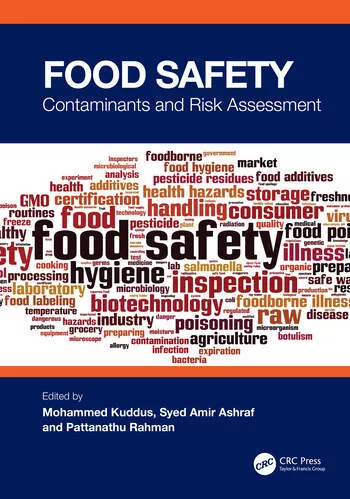MAHA Report Sets Stage for Overhaul of Food Chemicals, Environmental Contaminants, and Childhood Nutrition

Image credit: rawpixel / Roungroat via Freepik
The Trump administration released its "Make America Healthy Again" (MAHA) Report on May 22, laying a foundation for the overhaul of government policy on childhood nutrition, food chemicals and additives, environmental toxins found in food contact materials, vaccines, pharmaceutical usage, and technology habits of children and teens.
MAHA Commission leaders, including Department of Health and Human Services (HHS) Secretary Robert Kennedy Jr., presented their conclusions on the report to President Trump after the release of the report. President Trump previously issued an Executive Order on February 13 establishing the MAHA Commission and promising the delivery of a comprehensive "Make Our Children Healthy Again Assessment" within 100 days.
Food, Nutrition, and Public Health
Regarding food safety, nutrition, and public health, the report dedicates an entire section to the diet ramifications of consumption of ultra-processed foods, as well as the link between these foods and childhood chronic disease. The report notes that rising rates of childhood chronic disease "are likely being driven by a combination of factors," and affirms that "most American children's diets are dominated by ultra-processed foods (UPFs) high in added sugars, chemical additives, and saturated fats, while lacking sufficient intakes of fruits and vegetables. This modern diet has been linked to a range of chronic diseases, including obesity, type 2 diabetes, cardiovascular disease, and certain cancers."
The report defines UPFs as "industrially manufactured food products that undergo multiple physical and chemical processing steps and contain ingredients not commonly found in home kitchens," including "packaged and ready-to-consume products that are formulated for shelf life and/or palatability but are typically high in added sugars, refined grains, unhealthy fats, and sodium and low in fiber and essential nutrients." According to the report, nearly 70 percent of an American child's daily caloric intake comes from UPFs.
"The American food system is safe but could be healthier," the report states.
Food Chemicals and Additives
The report also takes a swipe at food chemicals and additives, such as synthetic dyes. It notes that "over 2,500 food additives—including emulsifiers, binders, sweeteners, colorings, and preservatives—may be used to mimic the taste and texture of conventional food and increase its shelf life," and that studies have established links between these chemicals and increased risk of mental disorders, ADHD, cardiovascular disease, metabolic effects, and cancer.
The report calls out specific food chemicals for having potentially harmful effects on health, including:
- Food colorings like red dye 40, which the report links to behavioral issues in children such as ADHD and autism.
- Titanium dioxide, a white food coloring that the report says may cause cellular and DNA damage.
- Propylparaben, a preservative that may cause hormone imbalances.
- Butylated hydroxytoluene (BHT), a preservative that has been found to cause tumor growth in rodent studies.
- Artificial sweeteners, such as aspartame, sucralose, and saccharin, which have been found to interfere with the gut microbiome in rodent studies. Additionally, aspartame has been classified as "possibly carcinogenic" according to the International Agency for Research on Cancer (IARC).
The report also notes that, "In recent years, some American parents have turned to European [infant] formula brands, driven by supply concerns and questions regarding the number and types of additives found in U.S. [infant] formulas."
Looking for quick answers on food safety topics?
Try Ask FSM, our new smart AI search tool.
Ask FSM →
The solution to the childhood nutrition and diet crisis, according to the report, is to "put whole foods produced by American farmers and ranchers at the center of healthcare," since "Research… consistently links diets centered on whole foods to lower rates of obesity, type 2 diabetes, heart disease, certain cancers, and mental illness."
The report also cites the distortion of nutrition research and marketing by the food industry as a causative factor in the diet crisis. "The public depends on scientific research and the media for information about the food we consume. The food industry has increasingly influenced these critical sources of public information, diminishing the integrity of information available to consumers," it notes.
Additionally, the report blasts the Dietary Guidelines for Americans (DGA) for its overly complex and technical language that may be difficult for the average American to understand; for not explicitly addressing UPFs or considering how foods are produced or processed; and for being influenced by corporate interests.
Environmental Chemical Exposure
Regarding environmental chemicals in food contact materials, the report addresses the potential health harms of PFAS and microplastics in food packaging, cookware, and other consumer products; phthalates and bisphenols in food packaging and other products; added fluoride in drinking water; and pesticides, herbicides, and other crop protection chemicals.
The report notes that more than 40,000 chemicals are registered for use in the U.S. and that "pesticides, microplastics, and dioxins are commonly found in the blood and urine of American children and pregnant women—some at alarming levels." Long-term, cumulative exposure to these chemicals through food, water, and air can pose health risks to children, including neurodevelopmental and endocrine issues, the report states.
"The Executive Order establishing the MAHA Commission directed the involved agencies to work with farmers to ensure that United States food is the healthiest, most abundant, and most affordable in the world," the report notes. It also acknowledges that "American farmers rely on [pesticides and other crop protection chemicals], and actions that further regulate or restrict crop protection tools beyond risk-based and scientific processes set forth by Congress must involve thoughtful consideration of what is necessary for adequate protection, alternatives, and cost of production."
Actions and Additional Insights
The MAHA Commission plans to immediately begin work on the development of strategy to "make our children healthy again," and aims to publish this strategy in August 2025.
Other immediate actions established by the report, with regard to the food supply, include:
- Oversight of the reform of the GRAS (Generally Recognized As Safe) provision for food chemicals and additives
- The development of long-term nutrition trials, to be funded by the National Institutes of Health (NIH), to compare whole-food, reduced-carbohydrate, and low-UPF diets in children to determine the effects on childhood obesity and insulin resistance
- The development of large-scale lifestyle interventions, including for childhood diet and nutrition
- The launch of a precision toxicology initiative to map gene-environmental interactions affecting childhood disease risk, including for endocrine-disrupting chemicals.
The entire MAHA Report can be viewed here.









